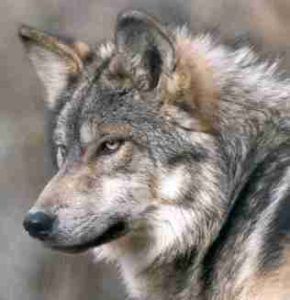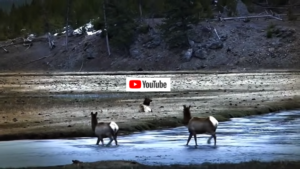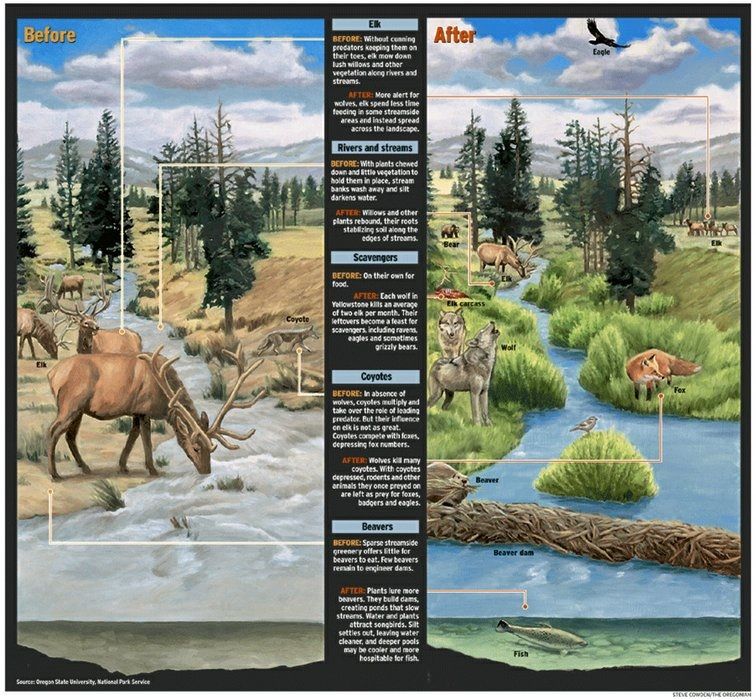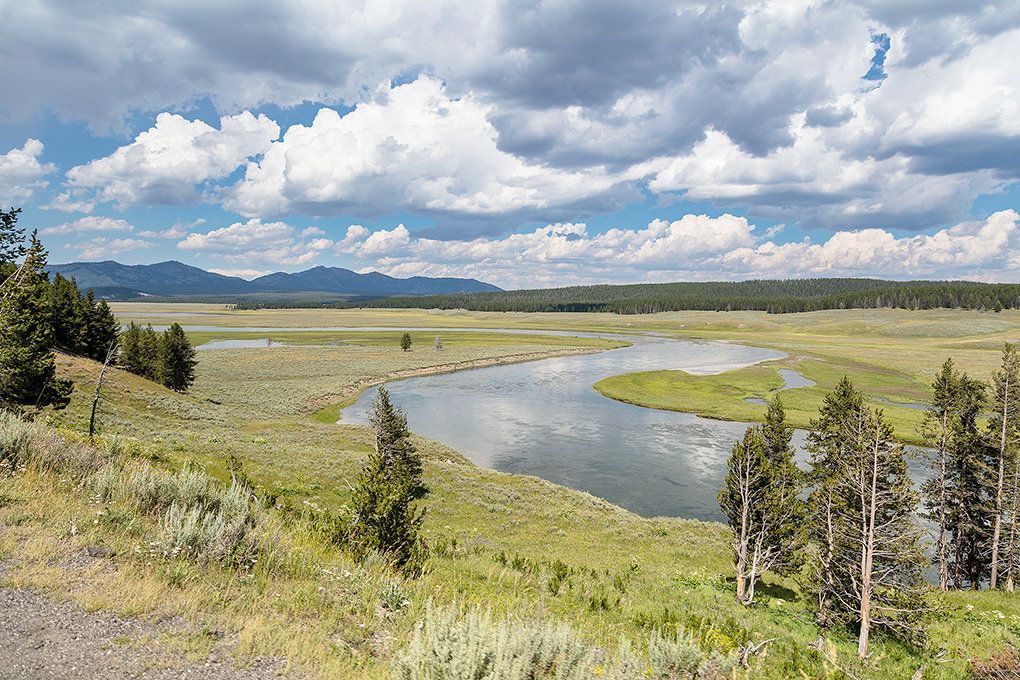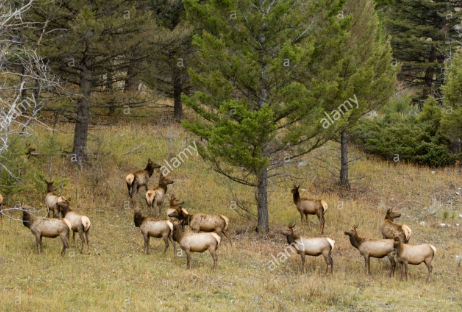Wolves changed the River
Nature as a Logical System
After wolves had been absent for seventy years from Yellowstone National Park, something incredible happened when 14 wolves were reintroduced to the Park in 1995.
The wolf helped provide balance, complexity and stability to an ecosystem that had been mismanaged and lacked a balanced functionality. Because there were serious problems, getting worse and worse. The elk and deer population had exploded (to over 20,000) and, despite efforts by the park to reduce their populations through hunting, the elk massed along the river banks and managed to over-graze much of the lower valleys of the park. Mice and rabbits, unable to use vegetation for cover, fell prey to coyotes. Grizzlies suffered, having no berries to feed on for their long hibernation The elk population gathered in large herds along the river banks, grazing away from the stabilizing vegetation and trampling the river banks with their massive hooves; banks eroded and clouded the river with silt, impacting all aquatic species such as fish and aquatic insects.
The first major change of the wolf reintroduction was an alteration of the behavior of the elk. The elk started avoiding certain parts of the park where they could be trapped, particularly the valleys and gorges. As a result, these areas rapidly regenerated. In some areas, tree height quintupled in six years. Aspen, willow and cottonwood recovered from severe browsing on bare valley sides and lowlands.
As a result, those areas began to regenerate, and species such as birds, mice and bears returned. With increased flowers, shrubs and trees, the songbirds and migratory birds increased as did bees and other pollinators. Beavers also came back; these ecosystem engineers created more complex habitats for other life forms such as amphibians, fish, and reptiles. Plant life once again thrived along the riverbanks and erosion decreased significantly. The stabilization of the riverbanks actually made the rivers and streams change course. With the reintroduction of just a small population of wolves, the landscape of the whole park transformed. Researchers at the University of California at Berkeley determined that the combination of less snow and more wolves has benefited scavengers both big and small, from ravens to grizzly bears.
Additionally, the benefits of the wolves presence in the park have even cascaded to the downstream residents of Billings Montana, who now enjoy more clean water from the Yellowstone River.
The wolf fulfills a very similar role through the trophic levels of its ecosystem by helping to balance monopolizing lower trophic levels, such as the elk and coyote, to create a more diverse and balanced assemblage of interacting life from beetles and beavers to bears.
The earthworm’s role is relatively the same when it comes to nature. They do their job and work hard like no other being. Period. Although their work may go unnoticed to some, their impact on the globe is immeasurable. They appear small in stature but they are the warriors of the Earth. It may appear on the surface as though worms do minimal work and make a minimal impact, but if you look under the surface you will see the result of the hard work that the worms do under the surface. This work is much bigger than all of us, it is the worms’ life work to make our environment cleaner and greener. This indirect impact makes a direct result of homeostasis.

